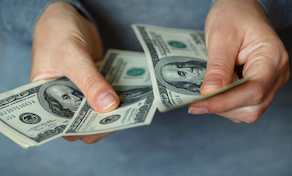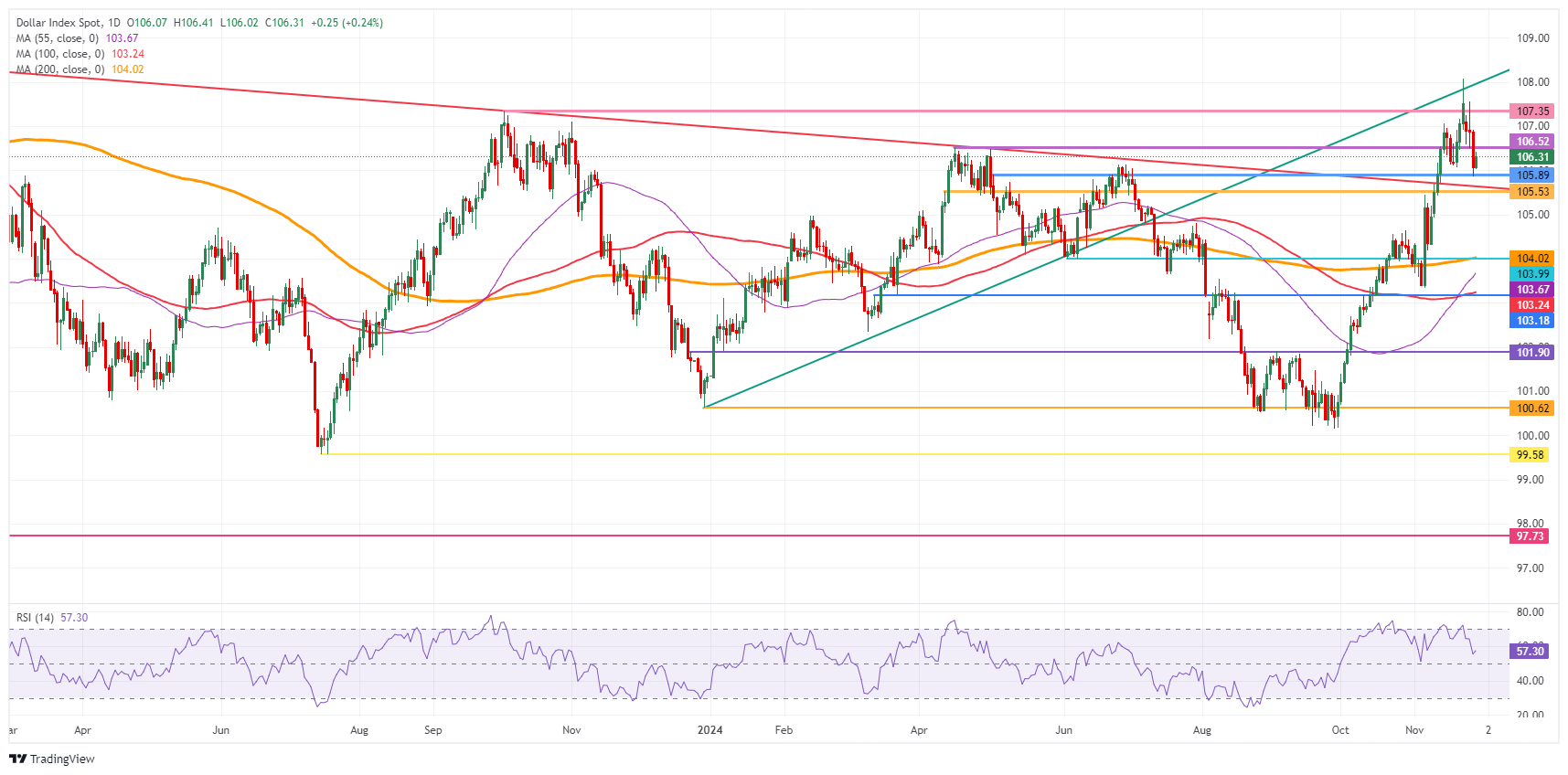
The US Dollar trades mildly positive against most major currencies.
With Thanksgiving and Black Friday ahead, US trading activity and volumes will be subdued.
The US Dollar Index trades back above 106.00 after a brief excursion found support below the level on Wednesday.
The US Dollar (USD) trades overall marginally higher against most major pairs on Thursday, with the US Dollar Index (DXY), which gauges the Greenback’s value against six major currencies, bouncing back above 106.00 after a sharp sell-off the prior day, in what is expected to be a very calm remaining two trading days for the week with Thanksgiving and Black Friday taking place. Thin liquidity and most major trading floors will be closed across the United States.
Meanwhile, the focus shifts to Europe, where France is struggling to convince markets it can pass its much-needed budget after France’s Prime Minister, Michel Barnier, warned that mayhem could take place in financial markets if the French parliament does not support the budget bill with the possibility that the French government could fall, Bloomberg reports.
Daily digest market movers: Markets are enjoying Thanksgiving
The US economic calendar will be empty on Thursday and Friday due to the Thanksgiving holidays.
Equities are trading in the green overall this Thursday. European indices are up nearly 1%, while US futures are flat to marginally higher on the day.
The CME FedWatch Tool is pricing in another 25 basis points (bps) rate cut by the Fed at the December 18 meeting by 68.2%. A 31.8% chance is for rates to remain unchanged. The Fed Minutes have helped the rate cut odds for December to move higher.
The US 10-year benchmark rate trades at 4.26%, and will not move this Thursday with the US bond market being closed.
US Dollar Index Technical Analysis: Risks above Europe
The US Dollar Index (DXY) might be moving in the coming two days due to some outside forces. One driver could come from the Eurozone, where France’s budget hangs in the balance. Should the balance not pass Parliament, France’s yields and spreads with other European countries could get out of control and trigger uncertainty for the Eurozone and the Euro (EUR), thus making the US Dollar (USD) outperform the shared currency.
With the profit taking this week, the pivotal resistance of 107.35 (October 3, 2023, high) became active again. The fresh two-year high at 108.07 reached last Friday is the level to beat further up. A brief spike to the 109.00 big figure level could play out in a volatile moment.
The DXY is bouncing off from 105.89, a pivotal level since May 2, which was held under profit-taking pressure on Wednesday. A touch lower, the pivotal 105.53 (April 11 high) should avoid any downturns towards 104.00. Should the DXY fall all the way towards 104.00, the big figure and the 200-day Simple Moving Average at 104.02 should catch any falling knife formation.
US Dollar Index: Daily Chart
US Dollar FAQs
The US Dollar (USD) is the official currency of the United States of America, and the ‘de facto’ currency of a significant number of other countries where it is found in circulation alongside local notes. It is the most heavily traded currency in the world, accounting for over 88% of all global foreign exchange turnover, or an average of $6.6 trillion in transactions per day, according to data from 2022. Following the second world war, the USD took over from the British Pound as the world’s reserve currency. For most of its history, the US Dollar was backed by Gold, until the Bretton Woods Agreement in 1971 when the Gold Standard went away.
The most important single factor impacting on the value of the US Dollar is monetary policy, which is shaped by the Federal Reserve (Fed). The Fed has two mandates: to achieve price stability (control inflation) and foster full employment. Its primary tool to achieve these two goals is by adjusting interest rates. When prices are rising too quickly and inflation is above the Fed’s 2% target, the Fed will raise rates, which helps the USD value. When inflation falls below 2% or the Unemployment Rate is too high, the Fed may lower interest rates, which weighs on the Greenback.
In extreme situations, the Federal Reserve can also print more Dollars and enact quantitative easing (QE). QE is the process by which the Fed substantially increases the flow of credit in a stuck financial system. It is a non-standard policy measure used when credit has dried up because banks will not lend to each other (out of the fear of counterparty default). It is a last resort when simply lowering interest rates is unlikely to achieve the necessary result. It was the Fed’s weapon of choice to combat the credit crunch that occurred during the Great Financial Crisis in 2008. It involves the Fed printing more Dollars and using them to buy US government bonds predominantly from financial institutions. QE usually leads to a weaker US Dollar.
Quantitative tightening (QT) is the reverse process whereby the Federal Reserve stops buying bonds from financial institutions and does not reinvest the principal from the bonds it holds maturing in new purchases. It is usually positive for the US Dollar.
* The content presented above, whether from a third party or not, is considered as general advice only. This article should not be construed as containing investment advice, investment recommendations, an offer of or solicitation for any transactions in financial instruments.



